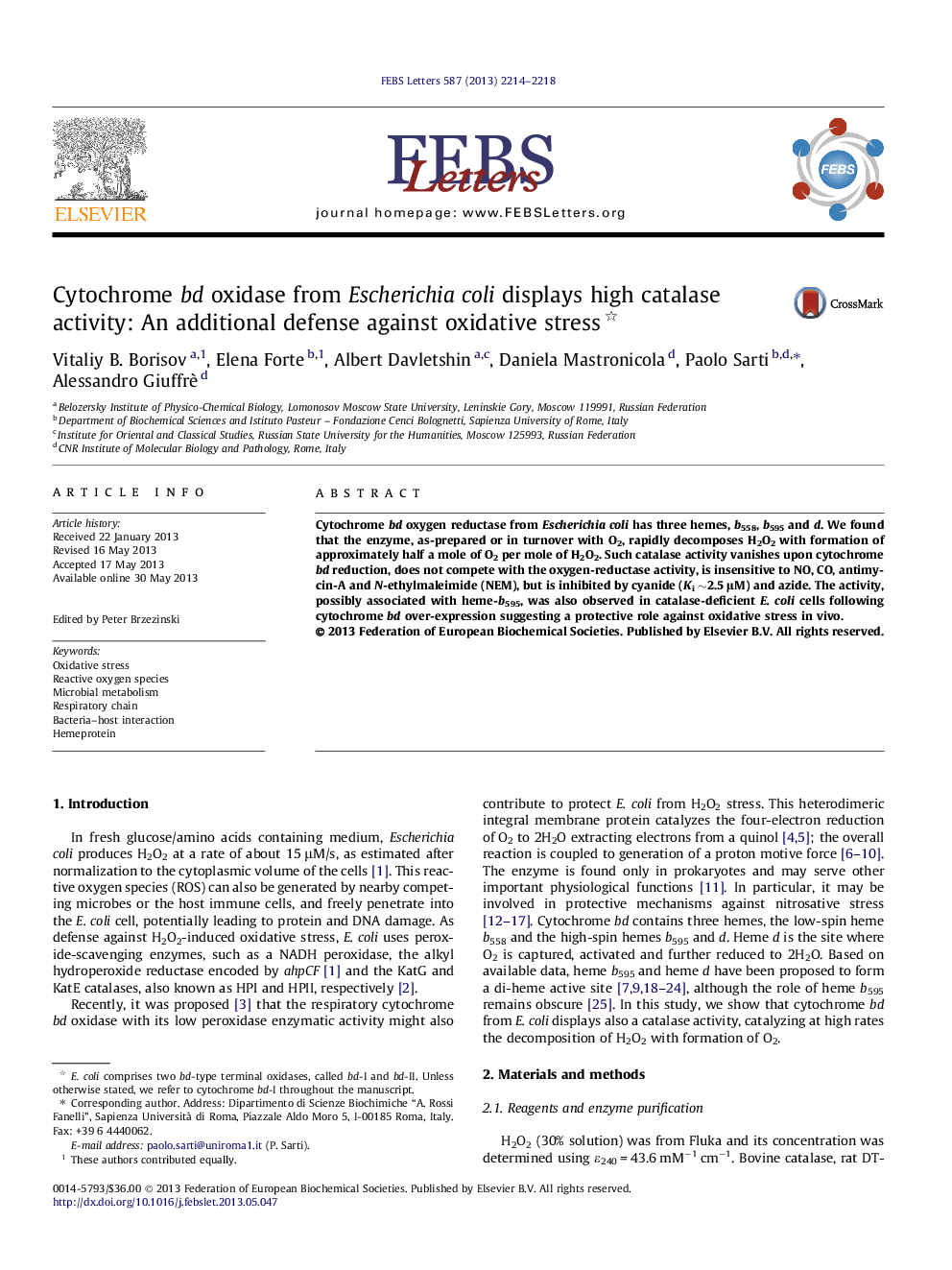| کد مقاله | کد نشریه | سال انتشار | مقاله انگلیسی | نسخه تمام متن |
|---|---|---|---|---|
| 2047922 | 1074045 | 2013 | 5 صفحه PDF | دانلود رایگان |

• Cytochrome bd from E. coli displays a notable catalase activity.
• Thermal denaturation or complete reduction of cytochrome bd abolishes this activity.
• Activity is insensitive to nitric oxide, contrary to bona fide catalases.
• A catalase activity is detected in catalase-deficient E. coli upon cytochrome bd over-expression.
• A protective role of cytochrome bd against oxidative stress is suggested.
Cytochrome bd oxygen reductase from Escherichia coli has three hemes, b558, b595 and d. We found that the enzyme, as-prepared or in turnover with O2, rapidly decomposes H2O2 with formation of approximately half a mole of O2 per mole of H2O2. Such catalase activity vanishes upon cytochrome bd reduction, does not compete with the oxygen-reductase activity, is insensitive to NO, CO, antimycin-A and N-ethylmaleimide (NEM), but is inhibited by cyanide (Ki ∼2.5 μM) and azide. The activity, possibly associated with heme-b595, was also observed in catalase-deficient E. coli cells following cytochrome bd over-expression suggesting a protective role against oxidative stress in vivo.
Journal: FEBS Letters - Volume 587, Issue 14, 11 July 2013, Pages 2214–2218